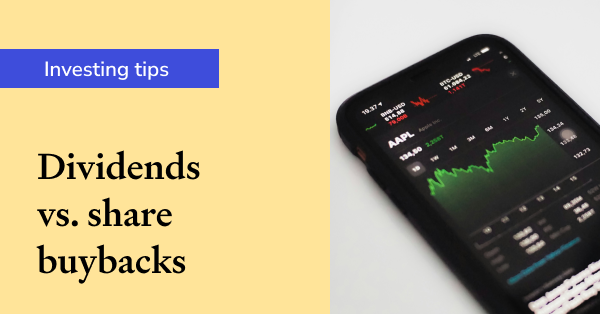Thoughts on (sports media) platforms
Entering the financial services world after university some years ago, I remember being struck by how many middle-layers existed between an actual pool of invested money and mum and dad investors. This was an industry - a world - unto itself. Outside of the trade press, no one talked about distribution channels, share classes, or platforms. Probably because it's super boring. Someone should really teach a MOOC titled "How Financial Services Should Work, How it Actually Works, and What You, the Recent Graduate, Will be Doing with Your Existence."
Armed with this knowledge, I began looking at other industries and wondering how much of what I experience as a consumer was in fact dictated by invisible platforms. As a male in my early 20's, sports took up an unhealthy chunk of my free time. Not playing sports, mind you, but obsessing over my local Chicago teams. If you're a supporter of any American sports team or have spent any time in the US, you can't follow sports and not be dependent on ESPN, the mega sports media platform.
Until the late 1990s ESPN was a disrupter. They broadcasted irreverent events (to Yanks) like Aussie Rules Football, ping pong, and the America's Cup. In fact it was their pioneering move to put cameras on the decks of the America's Cup sailboats that first got them noticed. Their flagship show, SportsCenter, was appointment viewing for sports-nuts and snarky hipsters alike. Combining highlight clips with witty banter proved to be perfect mindless viewing.
They were the sports anti-media. Their content was 180 degrees different than your dad's favourite tweed-clad, cigar-smoking sports writer. They were afforded this leeway because they were novel, but really because they couldn't afford to buy the rights to any major sports league. (In the US, sports TV rights are massive, billion-dollar, exclusive arrangements with anti-trust exemption).

ESPN changed when the Walt Disney Co. came knocking. The "Mouse" acquired the ABC network in 1995, along with ESPN. Suddenly, they were part of a public, global media conglomerate with the resources to buy rights to sporting events. And buy they did. ESPN now broadcasts Major League Baseball, the National Football League (Monday Night Football), the National Basketball Association, and the majority of college football games (arguably the most popular sport in the States). They now run at least four TV channels, produce movies, have a hug web presence, publish a self-titled magazine, operate their own restaurants, and have a nation-wide radio network. Things officially reached defcom-ridiculous when they launched their own mobile phone.
Any media company that gets this big will invite criticism. ESPN didn't help matters by filling programming time with cable-news style talking heads, and by making obvious editorial concessions based on what product they were selling. They essentially eliminated the line between news reporting and entertainment production. The worst example of this? Backing out of a PBS Frontline documentary on the head-injury epidemic facing gridiron players because the National Football League didn't want the negative press. Furthermore, ESPN was painfully slow to recognise the rise the sports blogs, and other decentralised media serving at once to criticise ESPN and to break news themselves.

This dominance can't continue, however, because at the end of the day it's the professional sports leagues that own the content, not ESPN. This is akin to a tech company not owning their code and outsourcing it to a development shop.
Things are fracturing. With the advent of iOS, Android, AppleTV, and Chromecast, leagues themselves now offer apps that give you live and on-demand access to their live events. All of the major pro leagues now have their own TV networks offered in pay-TV packages and online. This means that for the first time ever, the leagues have a direct conduit to their consumers. I'd love to be a fly on the wall in a few year's time when ESPN execs are trying to convince a pro league to sell them their content. I can imagine all kinds of "intangible value," "brand reinforcement," and "synergising backward overflow" mumbo-jumbo. This must be like when an ad agency tries to convince a client that they know search engine marketing better than Google.
As a fintech company, this is already happening in our world. In fact, sports-media is one of the only examples where financial services enjoy more rapid disruption.
ETFs were one, early effort in this process. These days, it's got to be difficult to be a bank-aligned financial adviser when clients ask why they've been sold particular bank-branded investments. For the banks, offering SMSFs will be even more challenging. Why would I sign-up for a bank-sponsored SMSF and put up with them trying to fill it with their products? At Sharesight, we're keeping a keen eye on the mFund from ASX effort too. This direct-to-consumer approach is a perfect "off-platform" solution. We plan to begin tracking mFund trades and distributions for our clients.
This isn't to say there's no place in our lives (or portfolios) for platforms. They just need to adapt and prove they can add value. It will be interesting to see if these dynamics force ESPN to change, or if they go the way of other media conglomerates. It would be hard to explain to shareholders why changing your business model is necessary when you've just pulled in $11 billion in revenue (2/3 of that from pay-TV fees - another industry being disrupted!). Maybe they'll double-down on offering thoughtful positions on sports, witty segments, and introducing the American heartland to the AFL.
FURTHER READING

How Sharesight helps advisors track net worth and simplify compliance
We talk to Ryan Jones, Partner, Accountant and Financial Advisor at Jones Louros, about how he uses Sharesight to manage his clients’ investment trusts.

Automatically track Swissquote trades with Sharesight
If you trade using Swiss broker Swissquote, you can automatically import your trading data to your Sharesight portfolio.

Dividends vs. share buybacks: Which is better for investors?
We take a look at dividends and share buybacks, discussing the pros and cons of each, the tax implications and which one is more beneficial for investors.